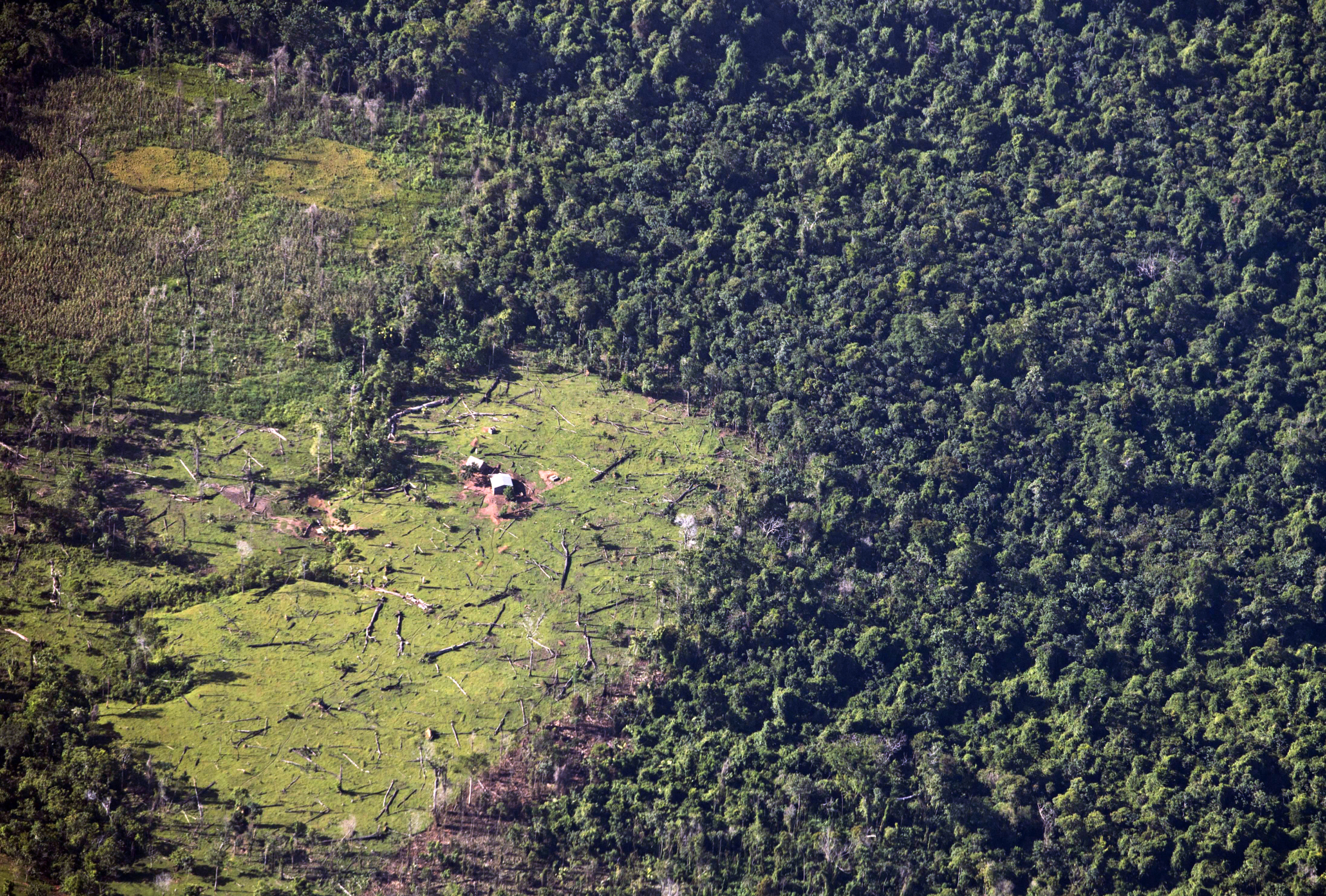Sign up for the daily CJR newsletter.
This story is being co-published with the Organized Crime and Corruption Reporting Project.
IN JUNE, OUR TEAM at the Organized Crime and Corruption Reporting Project (OCCRP) hired Cristopher Mendoza, a gregarious Nicaraguan journalist based in Managua, for a challenging assignment. At the time, we were in the midst of an eight-month investigation into Nicaragua’s little-known deforestation crisis; the country is losing its forests at a faster rate than any other country in the world, according to United Nations data. A trove of internal documents from Nicaragua’s forestry ministry gave us a rare view into how state corruption was enabling this destruction, but we also wanted to understand how the disaster was affecting the Indigenous communities who lived on the front lines. We hoped Mendoza would travel to the country’s northern Caribbean coast, a lush rainforest zone where Indigenous residents have faced increasing violence from land grabbers, to report on conditions on the ground.
We were also concerned. The autocratic regime of President Daniel Ortega had launched a sweeping crackdown on political dissent, jailing dozens of rival politicians, activists and journalists ahead of November’s national elections. Security forces were raiding the homes and offices of independent journalists and media outlets, in several cases pressing charges under repressive new laws that targeted “fake news” and foreign funding for Nicaraguan media.
Still, despite concerns about encountering security forces while traveling, and the rising violence by land grabbers in the north, Mendoza didn’t hesitate. He said he’d be safer outside Managua than at home. “It’s an area that’s very abandoned by the Nicaraguan state,” he said, referring to the northern Caribbean coast. “In Managua there’s more of a chance that someone would recognize me.”
Mendoza managed to reach the remote Indigenous communities, situated along the Coco River near the northern border with Honduras. He gathered accounts from Miskito residents about the toll of environmental destruction and encroachment by outsiders on their lands, as well as the climate of impunity that made these abuses possible. OCCRP later published a story, drawing heavily on Mendoza’s reporting, detailing exploitation of the Miskito people and their forests by a company part-owned by a national congressman. The story revealed how Nicaragua’s environmental crisis is fueled by graft in Ortega’s government.
When Mendoza returned to Managua, however, his situation quickly deteriorated. Prosecutors requested a meeting with Mendoza, to ask him about his colleagues at a local news organization, who were facing trumped-up charges of money laundering. Mendoza had heard of people being thrown in jail after such questioning; “in prison in Nicaragua, they violate your human rights,” he said later. He postponed the meeting and fled the country, ultimately arriving in Costa Rica, in exile from the country where he had lived his entire life. “There was no time to plan anything,” he said. “I just had to go.”
OCCRP’s team of reporters—based in the US, South America, and Europe—continued our investigation as Nicaragua’s crackdown intensified. As we worked, it became clear that state intimidation was part of the story. Nicaragua’s environmental disaster had gone unrecognized because its witnesses were being silenced. Media outlets faced a never-ending series of criminal charges; reporters we worked with fled the country, one after another.
Journalists aren’t the only ones in harm’s way. Last year, Global Witness, a UK-based nonprofit that tracks violence targeted at environmentalists, reported that murders of envronmental activists in Nicaragua had more than doubled from the previous year, making it the deadliest country, per capita, for land or environment defenders. As we reported, sources clammed up and became unreachable—in one case, after being targeted for assassination. We struggled to find experts who could clarify points of law or explain the technicalities of forestry permits; the people we tracked down were often too scared to speak, fearful for their own safety and that of their families. Exiles—and a handful of brave Indigenous leaders—were virtually the only ones who could speak to us on the record.
We published our investigation, which included Mendoza’s essential work, a week before the national elections. By then, independent media and civil-society groups had been snuffed out almost entirely. After Ortega claimed victory in an uncontested election, Carlos Fernando Chamorro—the exiled editor of Confidencial, a leading independent media outlet—wrote, “Never in the history of Nicaragua has the press been more unprotected against the fabrications of the authoritarian power and its eagerness to persecute.”
According to Mendoza, most independent reporting on Nicaragua now takes place outside the country, via exiled reporters and sources who can now speak more freely. He hopes that he and other Nicaraguan journalists might one day go back, to pierce the spreading silence. “All the Nicaraguan journalists I know have their backpacks ready to return,” he said. “To keep telling the story of Nicaragua.”
Has America ever needed a media defender more than now? Help us by joining CJR today.







